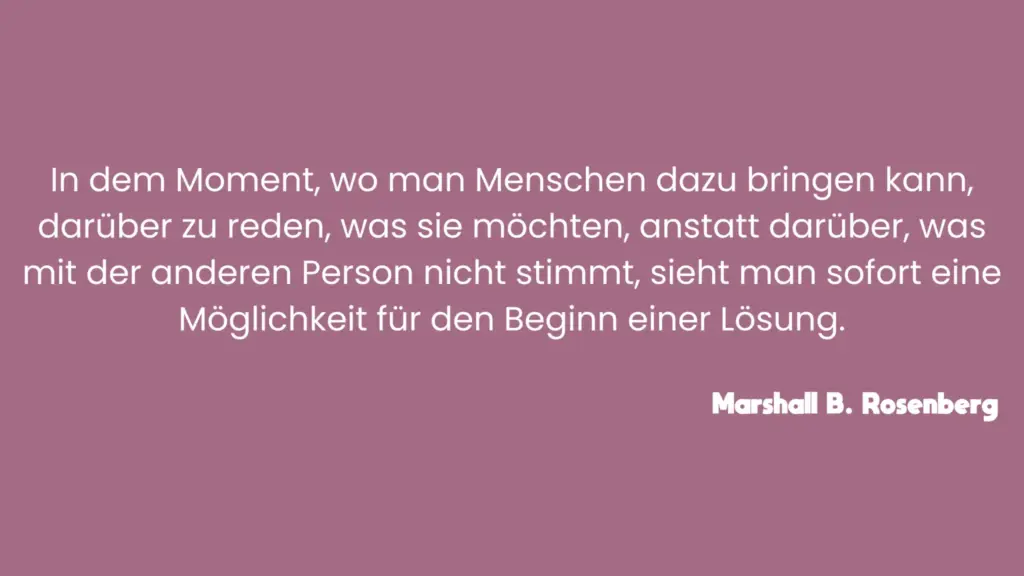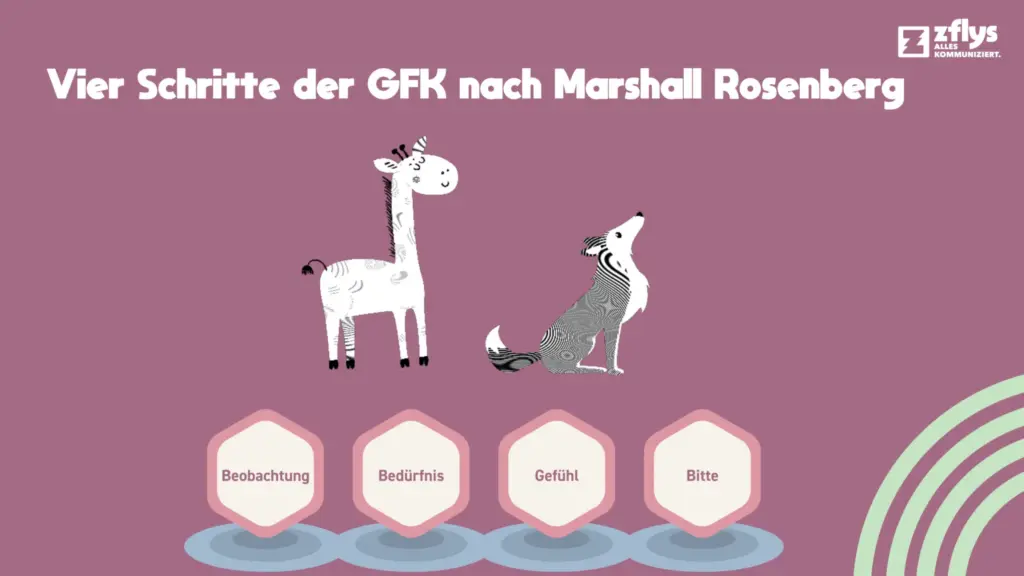Nonviolent Communication
The power of giraffe language and the danger of wolf howling
Why giraffe language?
Not only at zflys, but also in a dynamic business world where competition is tough and interactions are complex, communication plays a crucial role.
Nonviolent Communication (NVC), also known as giraffe language, is a way of interacting that not only strengthens interpersonal relationships but also has the potential to significantly influence success in everyday business.

What is Nonviolent Communication?

Table of contents
Enough reading.
With 4 steps to Nonviolent Communication
Step 1 → Observation: Listen actively, your full attention belongs to your conversation partner. Judgments and interpretations have no place here. In this step, we take a step back and simply observe.
Step 2 → Feeling: Do you already know your own feelings? If yes, awesome! If not, then we’ll have to talk about that again 😉
In this step, we focus strongly on our own feelings and emotions. Where do they suddenly come from, and what are they trying to tell me? The CONSCIOUS inner dialogue plays the leading role in both Step 2 and Step 3.
Step 3 → Need: You’re angry because your colleague has missed the meeting again? Once you’ve named the feeling, take a close look at the needs behind it! Why are you angry?
Step 4 → Request: Formulate concrete requests that aim to meet your needs.
In this way, giraffe language promotes open and respectful WIN-WIN communication.

The power of giraffe language
Managing conflicts better with the right communication method
The wolf howling
While giraffe language represents a positive force in everyday business, there is also an alternative form of communication that carries risks: wolf howling.
Wolf howling stands for a style of communication characterized by aggression, blame, and a lack of empathy. Instead of seeking joint solutions, wolf howling aims to exert power and resolve conflicts at the expense of others.
Why wolf howling is dangerous:
Wolf howling often contributes to escalating conflicts instead of resolving them. Fronts can harden, which can lead to a negative work climate or — even worse — impair productivity.
So it’s no surprise that wolf howling in no way contributes to efficient teamwork.
In a work environment where fear and great uncertainty are part of everyday life week after week, there is no room for creative solutions and new ideas. Wolf howling can therefore stifle creative development and hinder the willingness to innovate.

You have the choice!
and that is between giraffe language and wolf howling. Giraffe language offers you ways to resolve conflicts, foster understanding, and create a positive work atmosphere.
Wolf howling, on the other hand, carries risks that can damage team dynamics and business success. In the fast-paced, VUCA-shaped world that depends on collaboration, flexibility, and creativity, Nonviolent Communication proves to be a powerful tool for fostering a healthy and successful work environment.
FAQ
How can NVC help resolve conflicts in the workplace?
What advantages are there for companies that promote Nonviolent Communication?
Why is Nonviolent Communication important in the business world?
NVC fosters a positive work environment, improves interpersonal relationships, supports teamwork, and helps resolve conflicts constructively. This ultimately contributes to a healthy and productive work culture.
Can NVC be used in customer communication?
How can employees integrate Nonviolent Communication into their daily workflows?
Takeaways

Your choice — giraffe language or wolf howling?
It’s in your hands. Do you want a company that leads with respect, clarity, and empathy? Or one that sinks into fear, aggression, and misunderstandings? Giraffe language isn’t a nice-to-have — it’s a must-have for modern, successful companies.


